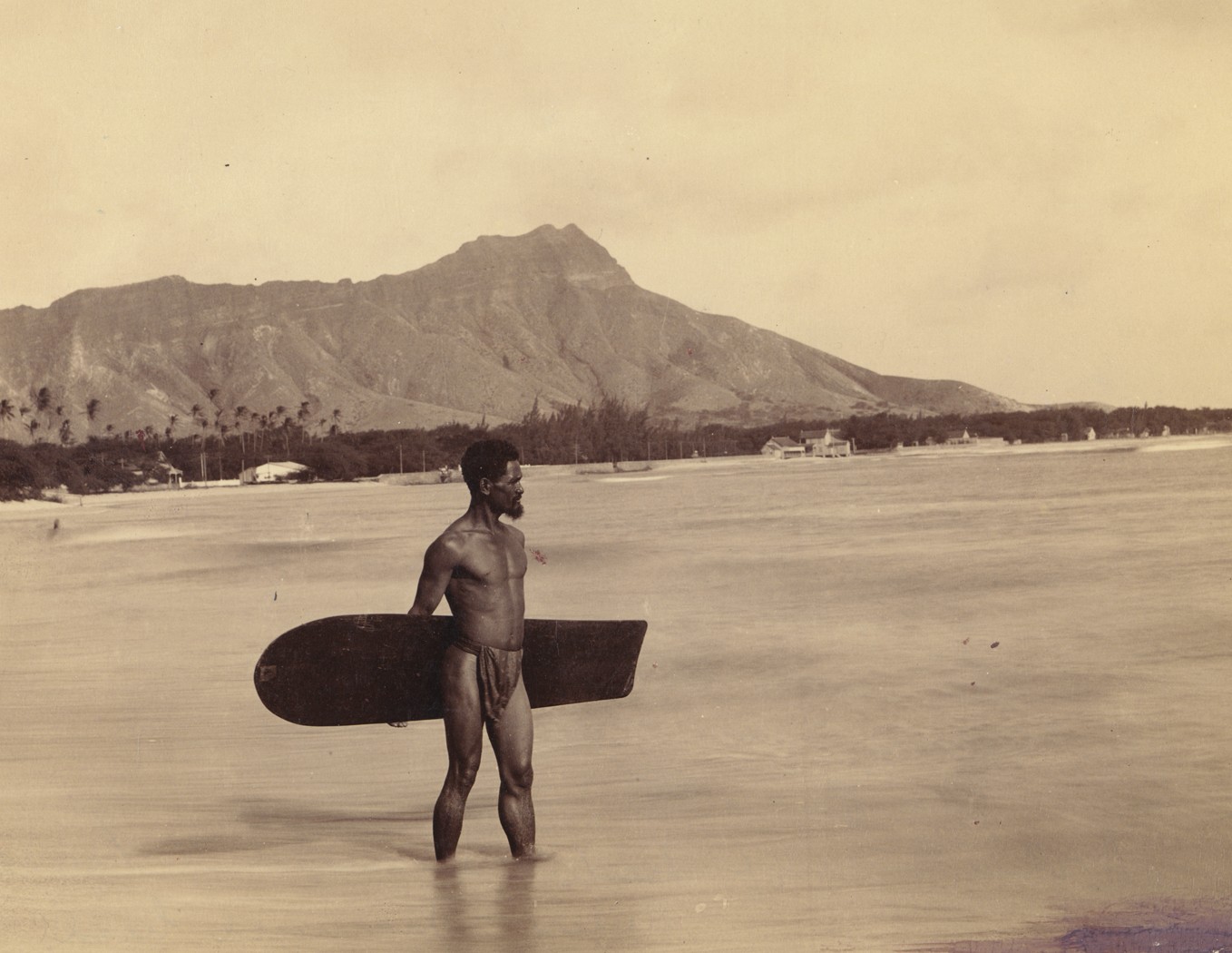Alaia on:
[Wikipedia]
[Google]
[Amazon]
 An alaia (pronounced , ) is a thin, round-nosed, square-tailed surfboard ridden in pre-20th century
An alaia (pronounced , ) is a thin, round-nosed, square-tailed surfboard ridden in pre-20th century
 An alaia (pronounced , ) is a thin, round-nosed, square-tailed surfboard ridden in pre-20th century
An alaia (pronounced , ) is a thin, round-nosed, square-tailed surfboard ridden in pre-20th century Hawaii
Hawaii ( ; haw, Hawaii or ) is a state in the Western United States, located in the Pacific Ocean about from the U.S. mainland. It is the only U.S. state outside North America, the only state that is an archipelago, and the only state ...
. The boards were about long, weighed up to , and generally made from the wood of the Koa Tree. They are distinct from modern surfboards in that they have no ventral fin
A fin is a thin component or appendage attached to a larger body or structure. Fins typically function as foils that produce lift or thrust, or provide the ability to steer or stabilize motion while traveling in water, air, or other fluids. Fin ...
s, and instead rely on the sharpness of the edges to hold the board in the face of the wave
In physics, mathematics, and related fields, a wave is a propagating dynamic disturbance (change from equilibrium) of one or more quantities. Waves can be periodic, in which case those quantities oscillate repeatedly about an equilibrium (re ...
.
Modern alaias are about long and are the larger version of the Paipo board, used for knee or belly surfing, and the smaller version of the Olo board, generally between long. All of these board types are similar in that each is made of wood and is ridden without a sharks fin/skeg
A skeg (or skegg or skag) is a sternward extension of the keel of boats and ships which have a rudder mounted on the centre line. The term also applies to the lowest point on an outboard motor or the outdrive of an inboard/outboard."A small fin f ...
.
History
The alaia's roots span back a thousand years. Lala is the Hawaiian word describing the action of riding an alaia surfboard. Lala is a word found in the Hawaiian dictionary meaning ‘the controlled slide in the curl when surfing on a board.' PrincessKaʻiulani
Kaʻiulani (; Victoria Kawēkiu Kaʻiulani Lunalilo Kalaninuiahilapalapa Cleghorn; October 16, 1875 – March 6, 1899) was the only child of Princess Miriam Likelike, and the last heir apparent to the throne of the Hawaiian Kingdom. ...
's alaia board, measuring 7ft 4in long, is preserved at the Bishop Museum.
Alaia boards began making a comeback around 2006 when surfboard-shaper and experimenter Tom Wegener tested prototypes made of paulownia wood among pro-surfers. The first contemporary professional surfers to master the skill of riding an alaia were documented in the Thomas Campbell surf film ''The Present''. This appearance dramatically increased the popularity of the alaia board type. Wegener used Australian surfer Jacob Stuth to test the first models, and over the next several years, he perfected the art of alaia design.
Shaper Donald Takayama furthered this movement with his designs under the Hawaiian Pro Designs label, shaped by Florida native, Brandon Russell.
Materials
“Ancient Hawaiians made their boards out of local woods–‘ulu, and koa.” Modern Alaia boards are made of many types of wood, including Redwood, Cedar, Pine and Balsa. Typically, commercially sold alaia boards are made ofpaulownia
''Paulownia'' ( ) is a genus of seven to 17 species of hardwood tree (depending on taxonomic authority) in the family Paulowniaceae, the order Lamiales. They are present in much of China, south to northern Laos and Vietnam and are long cultivat ...
.
Paulownia is optimal for crafting surfboards in that it has a good weight to strength ratio, being lighter than other hardwoods and more durable than balsa. It also absorbs less salt water than many other types of wood and therefore does not require a hard resin or glass finish.
Paulownia alaia boards are most often finished with a seed oil to further prevent water absorption and to prevent damage from the drying of salt and sun associated with surfing.
Environmental impact
Many environmentalists are enthusiastic about the use of paulownia alaia boards because of their minimal impact on the environment, whilefiberglass
Fiberglass (American English) or fibreglass ( Commonwealth English) is a common type of fiber-reinforced plastic using glass fiber. The fibers may be randomly arranged, flattened into a sheet called a chopped strand mat, or woven into glass clo ...
and epoxy surfboards are known for their many pollutants and long decomposition time.
Beyond avoiding fiberglass and epoxy resins, Wegener argues that modern Alaia boards have less impact on the environment based on the way the Paulownia wood is harvested, used and recycled. “Paulownia is plantation grown… The trees grow like weeds, about in three years and they are never from an old growth forest. Just sustainable tree farms…the leaves and flowers, is either fed to cattle or the dust and shavings are mulched… Paulownia dust (and shavings) is very good in the garden and breaks down quickly. Worms love it.”
Wegener also states that paulownia is preferable over balsa regarding its impact on human health, because “balsa wood dust hurts your lungs.”
After construction, paulownia boards can be reshaped and repaired without use of more toxic materials. When cared for properly the boards can last a lifetime requiring less manufacturing, and when their usefulness has run out, simply discontinuing oil treatment to the board will allow it to decompose quickly without releasing harmful toxins found in foam and resin into the air and soil.
References
{{reflist Hawaiiana Surfing equipment